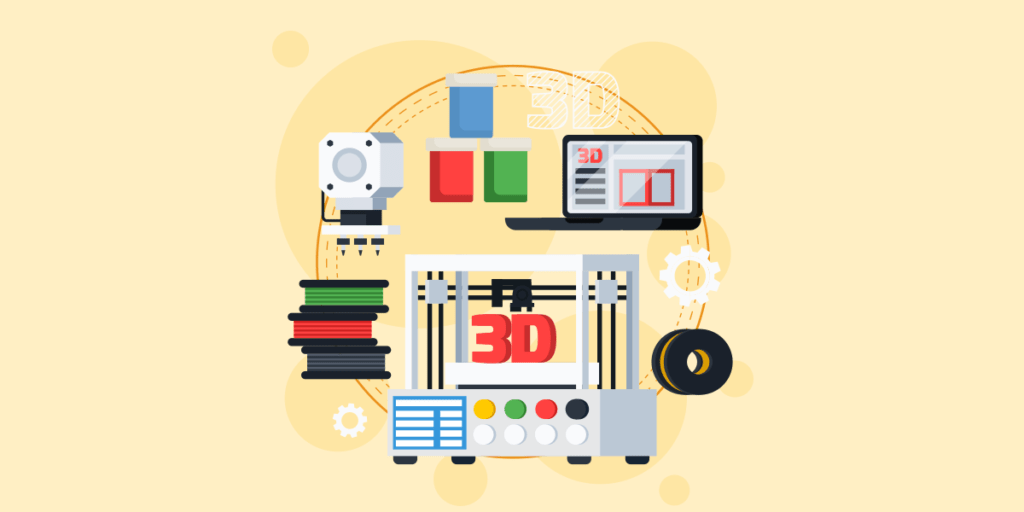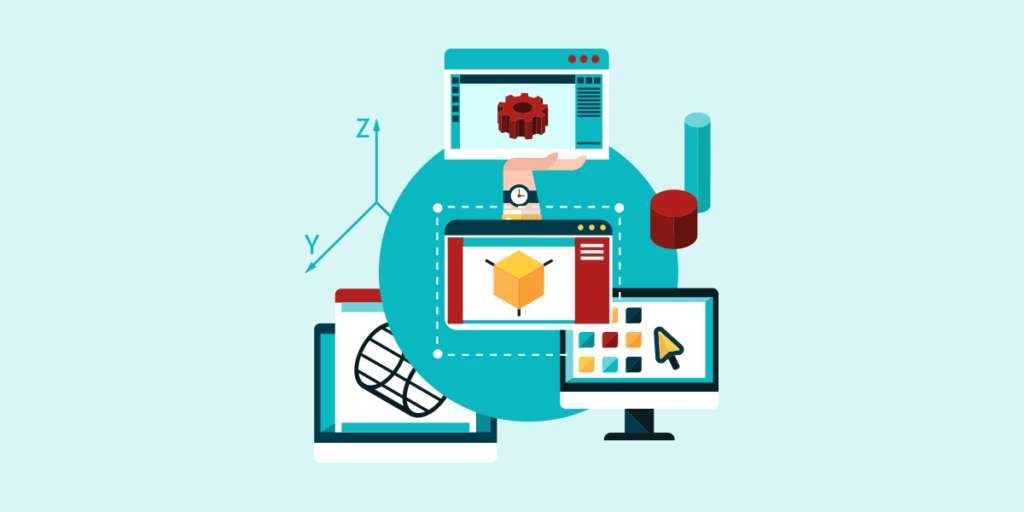3D Printers are undoubtedly the technology of the future, with research being conducted in additive manufacturing at a massive level internationally. Industrialists and academics are equally interested in this advanced technique, which carries a prospect of higher efficiency and flexibility in production methods.
3D printers’ role in modern times and the times to come is so crucial that having basic knowledge of them is a must for anyone planning to work with them. People must be aware of what 3D printers are and what are they capable of in order to gain maximum benefit from them.
We have compiled a comprehensive list of all the components that make a 3D printer a 3D printer. This information can benefit those who are planning to build their own machines or own one already. In general, these components can be divided into two categories: mechanical components that form the physical structure of the machine, and electrical components that control and power it.

First, we summarize the functionality of all mechanical components. These are all essential in holding the machine and the print together, and any issue in any one of these almost always means that a replacement is due and you will probably be ruining your print if you still choose to run the 3D printer.
- Frame: The frame is the basic structure of the 3D printer. It is made from a hard material such as high-grade acrylics or Aluminum since it has to bear the forces exerted by motors and carriages while in operation, as well as the weight of everything attached to it. Its build has a direct effect on accuracy as it absorbs any vibrations faced by the printer. A weak frame, or one that has not been fastened together properly, would tend to move itself during printing, which will result in a distorted print.
- Print Bed: The platform over which the hot-end extrudes material is known as the print bed. The bed must have a surface that not only bears the high temperature of the extruded material but also grip it to prevent it from slipping/toppling. It is either heated or non-heated, depending on the model and application. The heated one prevents the initial layers of the print from contracting, essentially keeping them in their original shape. This preserves the print’s shape in a better way as compared to a non-heated bed.
- 3D Printer Head: The part of the 3D printer that melts and extrudes the material on the print bed layer by layer. It is supplied with the print material in the form of a filament or powder, depending on the 3D printing technique being employed. It houses the hot-end and nozzle which are responsible for melting the print material and extruding it properly. Moreover, it is often fitted with a temperature sensor that communicates directly with the controller.
- Carriages: The mechanical components whose movement determines the head’s position in its three-dimensional space. These carriages are powered by motors that work in tandem with each other to ensure accurate movement of the extruder.

Next up are the electrical components that form the circuit responsible for running a 3D printer. These are more important than mechanical components as a problem with them means that the 3D printer would not work, which is not really what you want.
- Motherboard: The motherboard is the brains of your 3D printer. It performs the primary function of processing all data provided by you and the various sensors housed by the 3D printer. With your commands acting as an input as well, the motherboard controls the carriage motors and the printer head to create the print.
- Circuit: Since the motherboard needs to run proper logic, a complex circuit including a micro-processor is a part of every 3D printer’s design. It is composed of numerous electrical devices such as resistors, MOSFETS, drivers, etc.
- Motors: Motors are what cause the 3D printer head to move around in its workspace. Actuated by the processor and their individual drivers, their rotation causes the carriages to rotate along with them, which then converts this rotational motion into linear motion of the head.
- 3D Software: Although neither a mechanical nor an electrical component, 3D CAD and slicing software are necessary for 3D printing. CAD software is what you use to build a 3D model. It allows you to sketch your model in 2D first and then convert it to 3D through numerous functions. To prepare this model for printing, it must be sliced into layers that are individually printed by the 3D printer. This function is performed by slicing software.
So these are the main constituents of a 3D printer. Every 3D printer in the market is an amalgam of all of these. After reading this article, you can now distinguish between them easily and know your 3D printer better, which is the first step towards a successful enterprise.



